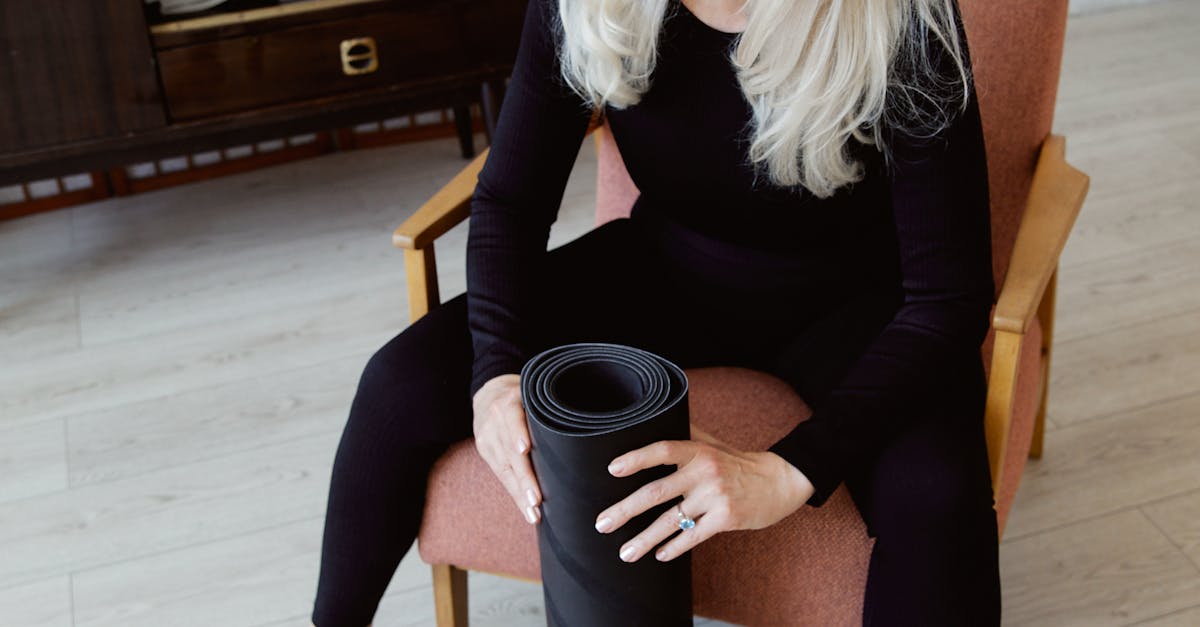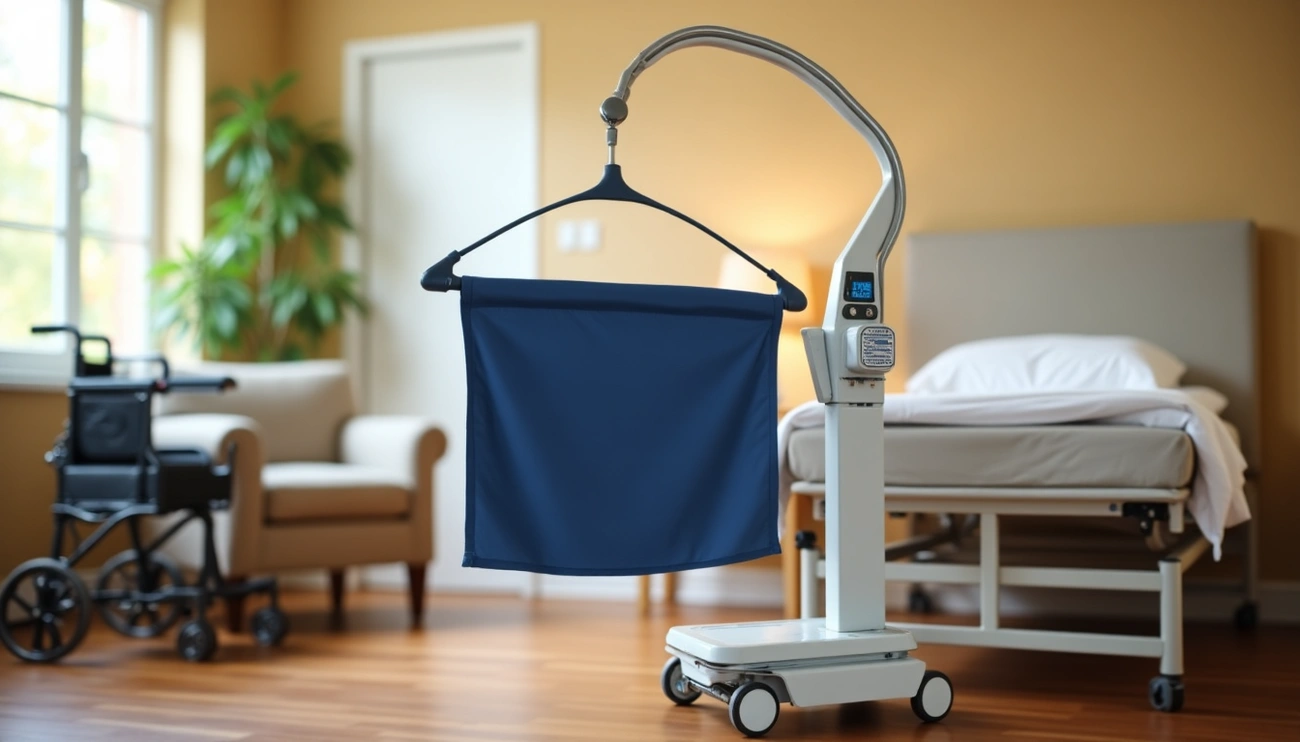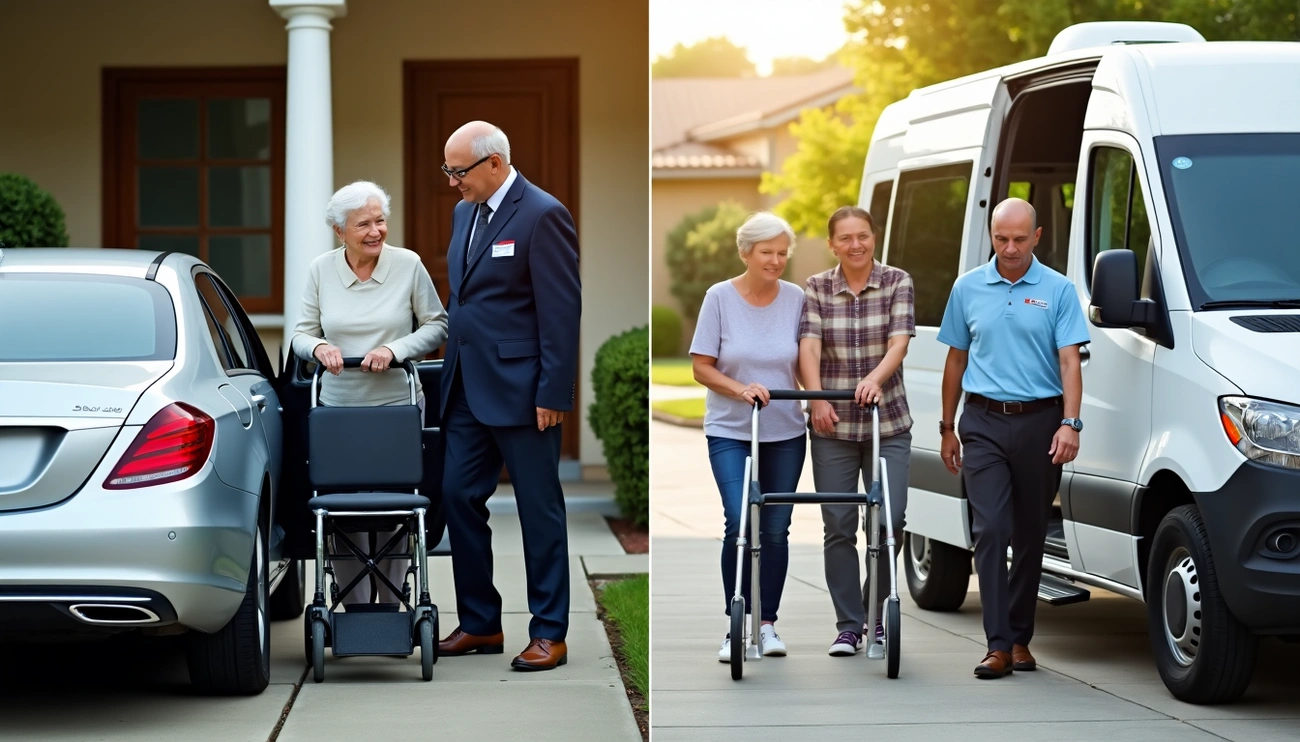Chair exercises can reduce fall risks by up to 34% in older adults, according to recent research. This significant statistic highlights why seated workouts are increasingly recommended for seniors.
For adults aged 65 and older or those using mobility aids, chair exercises provide a stable platform for physical activity while minimizing joint stress. Studies show these exercises improve strength, balance, and mobility while reducing pressure on vulnerable knees and ankles.
Chair workouts also help seniors maintain independence by strengthening muscles used in daily activities. From lifting groceries to getting out of bed, these functional movements directly support everyday tasks. The Canadian Physical Activity Guidelines state older adults should perform muscle-strengthening activities twice weekly, complemented by 75-150 minutes of aerobic activity.
This guide covers everything needed to establish an effective seated exercise routine at home. Starting with basic movements for beginners, it progresses to more challenging workouts for active seniors seeking greater benefits. Each section provides specific techniques designed to improve strength, flexibility, and balance without requiring specialized equipment.
Getting Started with Chair Exercises for Seniors
Setting up for chair exercises requires minimal preparation but careful attention to safety details. A proper setup significantly improves exercise effectiveness while reducing injury risks.
Choosing the Right Chair for Safety
The foundation of any seated exercise program begins with selecting an appropriate chair. Experts recommend a sturdy, stable chair without wheels to prevent unexpected movement during workouts. Wheeled chairs pose a substantial fall risk when they slide during exercise movements.
Chairs without armrests provide greater freedom of movement during upper body exercises. The seat should be firm rather than cushioned, offering proper posture support throughout the workout.
Proper positioning requires sitting with feet flat on the floor and knees at a 90-degree angle. This alignment creates the optimal foundation for most seated exercises. Before beginning any routine, verify the chair doesn’t wobble and can fully support your weight.
Essential Equipment for Home Workouts
Several basic items can enhance seated workout effectiveness beyond a suitable chair. These tools remain generally affordable and require minimal storage space.
A yoga mat serves multiple functions in an exercise space. Placing it under the chair prevents slipping while providing cushioning for standing exercises that use the chair for support. Seniors benefit from thicker mats (approximately 15mm) that offer enhanced joint protection.
Resistance bands prove particularly valuable for chair-based strength training. These versatile tools improve upper and lower body strength while remaining gentle on joints. Many seniors find them easier to manage than traditional weights, particularly those with grip limitations.
Beginning chair exercises often require no specialized equipment. As strength improves, consider adding:
- Light weights (water bottles work well for beginners)
- A stability ball (can eventually replace a chair for some exercises)
- Wrist weights (especially helpful if gripping is difficult)
Setting Up Your Exercise Space
Creating a dedicated exercise area encourages consistent workout habits. The National Institute on Aging recommends well-lit locations, preferably with natural light to enhance mood during exercise sessions. Good lighting also reduces accident risks.
The exercise space should be:
- Spacious enough for free movement without furniture obstacles
- Free from clutter to prevent tripping hazards
- Easily accessible, even for those using mobility aids
- Temperature-controlled with good ventilation
Flooring requires special consideration. Non-slip, cushioned surfaces provide stability and reduce joint impact. Interlocking foam tiles or rubber mats offer excellent solutions for hard-floored areas.
Keep water and a small towel within easy reach to maintain workout continuity. This arrangement helps maintain focus and proper form throughout exercise sessions.
A personalized space significantly increases routine maintenance likelihood. Some seniors benefit from television access for following exercise videos, while others prefer radio for motivational music.
Healthcare providers should be consulted before beginning any chair exercise program, especially for those with existing health concerns or activity limitations.
Beginner-Friendly Seated Exercises
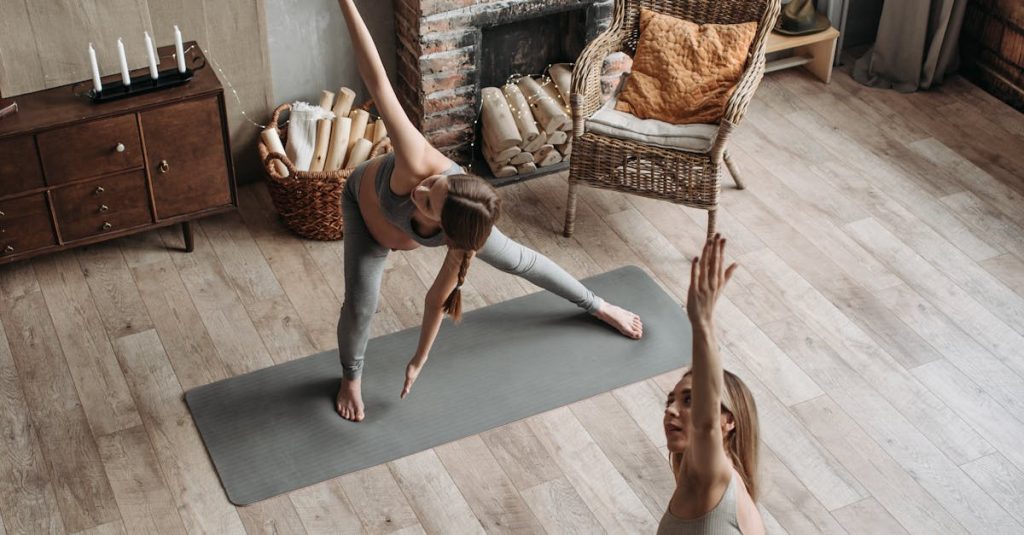
Beginner chair exercises provide an accessible starting point for seniors looking to improve strength and flexibility. These foundational movements focus on proper technique while respecting physical limitations.
Upper Body Stretches
Upper body stretches target tension in the shoulders and neck, common problem areas for many seniors. Proper posture forms the foundation for these movements—sitting tall with a straight back and relaxed shoulders.
The Shoulder Rotation offers an effective starting exercise. Sitting upright with feet flat on the floor, seniors roll their shoulders backward in a circular motion to loosen tight muscles and improve mobility. Studies show this simple movement increases blood flow to stiff joints. Physical therapists recommend completing 5-10 rotations before reversing direction.
For the Upper Body Stretch, participants sit away from the chair back, inhale while raising both arms overhead, then exhale while maintaining this position. Research indicates this stretching pattern improves shoulder flexibility and reduces everyday pain when reaching for objects. The motion can be enhanced by alternately reaching higher with each arm, creating warmth throughout the upper body.
The Chest Stretch directly addresses posture issues by expanding the anterior chest wall. Sitting upright, participants extend their arms sideways while gently pushing the chest forward until feeling a comfortable stretch. Holding for 5-10 seconds and repeating 5 times helps counteract the forward-hunched position many seniors develop.
Simple Leg Movements
Lower body strength exercises build functional mobility and support independent living.
Seated Marching develops hip flexor strength and core stability. The motion requires sitting tall with feet flat, then lifting one knee toward the chest while maintaining proper back alignment. This exercise simultaneously improves mobility and strengthens core muscles—both critical for fall prevention. Geriatric fitness experts recommend 1-2 minutes of alternating leg lifts.
Knee Extensions specifically target quadriceps muscles. Participants sit with a straight back and arms at their sides, then extend one knee while contracting the front thigh muscles. Research shows this motion directly improves stair-climbing ability and standing transfers. The American College of Sports Medicine recommends holding for 3 seconds before switching legs, performing 15 repetitions per side.
The Ankle Pump enhances circulation and ankle mobility. With legs extended, seniors point their feet downward, hold briefly, then flex upward toward the shins. Studies indicate this exercise reduces swelling in lower extremities while improving balance through greater ankle control. Ten total repetitions typically produce measurable circulation benefits.
Gentle Core Activation
Core strength provides the foundation for balance and fall prevention. Even gentle seated exercises effectively engage these essential muscles.
The Seated Torso Twist works oblique muscles while improving spinal mobility. Participants sit upright with feet flat, place one hand on the opposite knee and the other hand on the same-side hip, then exhale while rotating toward the hand placement side. The Journal of Aging Research reports this rotational pattern improves everyday turning movements and reduces fall risk during transitional activities.
For Seated Side Bends, participants maintain tall posture while slowly leaning sideways, reaching one hand toward the floor before returning to center. This exercise engages lateral core muscles that support stability during side-stepping motions. Research indicates 10 repetitions per side effectively activates these stabilizing muscles.
Proper Breathing Techniques
Coordinated breathing enhances exercise effectiveness while providing independent relaxation benefits.
Coherent Breathing represents perhaps the most valuable breathing technique for seniors. Participants sit with straight spines, place hands on their bellies to monitor breathing sensations, then inhale through the nose for a count of two before exhaling through the mouth for an equal count. This controlled breathing pattern reduces stress hormone production while improving oxygen utilization. The National Institute on Aging reports regular practice produces measurable improvements in heart rate variability.
For optimal results, these breathing exercises should be practiced for five to fifteen minutes daily. The primary goal remains comfort and relaxation without pushing beyond physical limitations.
All movements should remain gentle and pain-free—any exercise causing discomfort should be modified or skipped entirely. Progress should follow individual capacity rather than predetermined timelines.
Intermediate Chair Workout Routine
Seniors who have mastered basic chair exercises can progress to more challenging movements that target specific muscle groups. These intermediate-level exercises build functional strength needed for everyday activities while maintaining proper joint alignment.
Strength-Building Arm Exercises
Upper body strength directly supports independence in daily activities like carrying groceries or pushing up from a chair. Studies show that arm strength declines approximately 15% per decade after age 50 unless actively maintained through resistance training.
Seated Biceps Curls effectively target the front upper arm muscles essential for lifting objects. The National Institute on Aging recommends sitting tall with back straight and feet flat on the floor, shoulder-width apart. Hold a light dumbbell (or water bottle) in each hand with palms facing forward. Keeping elbows close to your sides, bend your elbows to curl the weights toward your shoulders, then lower with control. Research indicates 8-12 repetitions with lighter weights (1-5 pounds) provides optimal strength gains for seniors.
Dumbbell Overhead Press develops shoulder and upper back muscles crucial for reaching overhead cabinets or shelves. Begin seated with dumbbells at shoulder height, palms facing forward. Raise arms overhead as comfortable, then return to starting position. Physical therapists recommend 12 repetitions while maintaining proper posture throughout the movement.
Seated Row addresses upper back weakness that contributes to poor posture. Extend legs forward with a resistance band around your feet. Grasp the band ends, pull elbows back while squeezing shoulder blades together, then return to starting position with control. This exercise counteracts the forward-hunched position common among seniors. Health professionals suggest 8-10 repetitions for optimal results.
Lower Body Movements for Stability
Lower body strength directly correlates with fall prevention and mobility maintenance. The Journal of Aging Research reports that leg strength serves as a primary predictor of independent living capability in adults over 65.
Chair Squats build essential leg and core strength needed for daily activities. Sit at the chair’s front edge with feet flat on the floor. Stand slowly by driving heels into the ground while keeping chest upright. Lower back down with control until seated. Despite its simplicity, this functional movement mirrors getting in and out of cars and other seated positions. Geriatric specialists recommend 10-15 repetitions.
Standing Leg Curls strengthen hamstrings and improve knee stability often compromised by age. Stand behind your chair, holding the back for support. Shift weight to one leg, then bend the opposite knee to bring heel toward buttocks. Maintain stable hips and keep standing leg slightly bent. Hold briefly before lowering. Complete 12-15 repetitions per leg to improve walking gait and stair climbing ability.
Heel Raises address ankle instability and calf weakness commonly associated with balance issues. Stand behind your chair for support with feet approximately 6 inches apart. Rise onto the balls of your feet as high as possible, engaging calf muscles. Hold for 3 seconds, then lower slowly. Physical therapists note this exercise improves stability during walking on uneven surfaces. Perform 10 repetitions.
For optimal results, these intermediate exercises should be performed twice weekly. Geriatric fitness experts recommend starting with a single set of each exercise, gradually progressing to two sets as strength improves. The American College of Sports Medicine emphasizes that exercises should challenge seniors without causing pain.
Advanced Seated Exercises for Active Seniors
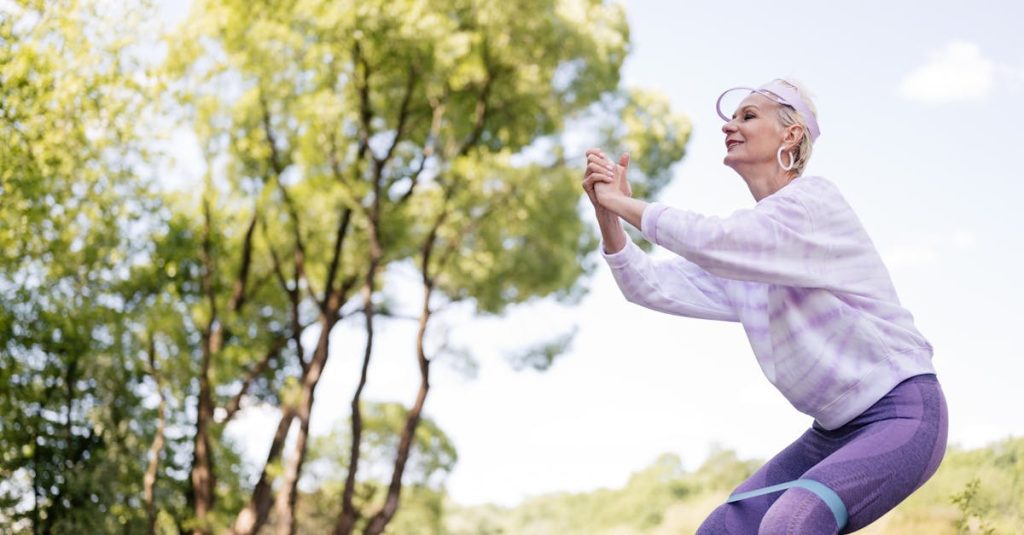
Advanced chair exercises challenge seniors who have built a solid fitness foundation. These more demanding movements develop functional strength needed for independent living while still providing the safety of seated support when needed.
Challenging Core Workouts
Targeted core work significantly improves posture and reduces fall risk among active seniors. Extended Leg Raises effectively strengthen abdominal muscles crucial for everyday movements. The Journal of Aging Physical Activity reports these exercises improve trunk stability during walking. To perform them, sit securely near the chair’s edge, grip the seat, and raise one leg as high as your hip permits. Lower it with control before switching sides.
Seated Side Bends target often-neglected lateral core muscles. Sitting tall with hands behind your head, bend sideways as far as comfortable without pain. Physical therapists note this movement improves flexibility while strengthening key stabilizing muscles that prevent sideways falls.
The Abdominal Lean directly engages front abdominals without floor work. Sit centered with feet hip-width apart and arms at shoulder level. Maintaining proper spinal alignment, lean back slightly until you feel muscle engagement, then return upright using core strength. This movement builds strength for everyday activities like getting up from reclined positions.
Resistance Band Exercises
Resistance bands provide effective strength training without joint stress. The Chest Press builds upper body pushing strength needed for daily tasks. Wrap the band around your back, hold the ends with hands positioned inside your arms, then push forward against resistance. National Institute on Aging research shows this movement helps with activities requiring forward force.
For the Shoulder Press, place one foot on the band’s center, hold one end at shoulder level, then push upward against resistance. This exercise improves overhead reaching ability and shoulder mobility that diminishes with age. Clinical studies demonstrate improved functional reach after just eight weeks of consistent training.
Bicep Curls strengthen arms essential for lifting objects. Stand on the band with one foot, palm facing upward, pull toward your shoulder against resistance, then lower slowly. Stronger biceps directly support independence through improved lifting capacity for groceries and household items.
Coordination and Balance Movements
Balance training remains possible even from seated positions. Chair Marching with knees lifted high challenges core stability while improving coordination between upper and lower body. Reuters reports that seniors who regularly practice this exercise show measurable improvements in walking gait and stair climbing ability.
Seated Balance Exercises provide multiple benefits identified by the American College of Sports Medicine:
- Reduced fall risk through improved proprioception
- Increased blood flow to extremities
- Enhanced joint lubrication and flexibility
Heel-to-toe Walking builds coordination essential for navigating tight spaces. Stand beside a wall for support, place one foot directly in front of the other heel-to-toe, then walk forward slowly. This walking pattern activates deep stabilizing muscles rarely used in normal walking.
These advanced exercises should be performed 2-3 times weekly with rest days between sessions, according to physical therapy guidelines. While challenging yourself appropriately remains important, consistency ultimately produces better results than occasional intense workouts.
Creating a Weekly Exercise Schedule
A structured exercise schedule transforms occasional chair workouts into consistent health habits for seniors. The Centers for Disease Control and Prevention (CDC) recommends adults aged 65 and older complete at least 150 minutes of moderate-intensity aerobic activity weekly, along with muscle-strengthening activities at least twice per week.
Balancing Different Exercise Types
Exercise specialists emphasize finding your personal “Goldilocks Zone” for chair exercises—the right amount that produces benefits without causing strain or injury. Three fundamental components should appear in weekly routines:
- Aerobic activities: Movements that elevate heart rate and breathing to improve cardiovascular health
- Strength training: Resistance exercises that build muscle mass and bone density
- Balance and flexibility work: Movements that enhance stability and joint range of motion
Research published in the Journal of Aging and Physical Activity shows alternating between these exercise types produces more comprehensive health benefits than focusing on a single approach. Physical therapists often recommend scheduling strength training on Mondays and Thursdays, flexibility work on Tuesdays and Fridays, with light aerobic movements on Wednesdays.
Rest and Recovery Days
Rest days play an essential role in fitness progress, particularly for seniors. Rather than representing exercise avoidance, recovery periods allow muscles to repair and strengthen after workouts. Studies indicate seniors face higher risks of overtraining without adequate recovery, including muscle strain, joint inflammation, and potential injuries.
The American College of Sports Medicine advises against exercising the same muscle groups on consecutive days, recommending at least 48 hours between strength-training sessions. Physical therapists note that pain, unusual fatigue, or persistent discomfort signals the need for additional recovery time.
Tracking Your Progress
A simple exercise log serves as both accountability tool and motivation source. The National Institute on Aging suggests recording:
- Specific exercises performed
- Duration of exercise sessions
- Any modifications made to standard movements
- Physical and mental responses during and after exercise
This documentation prevents workout session skipping while providing tangible evidence of improvement over time. Geriatric fitness specialists report that many seniors can gradually increase repetitions or movement difficulty as strength builds across weeks and months.
Research consistently shows that consistent, moderate activity produces better long-term health outcomes than occasional intense workouts. Exercise physiologists note this pattern proves especially true for adults over 65, whose bodies require more recovery time between challenging sessions.
Conclusion
Chair exercises provide seniors with a safe, effective approach to improving health and maintaining independence. Research shows that progressing gradually from basic movements to more challenging exercises produces sustainable benefits while minimizing injury risks.
Success with seated workouts depends on several key factors. Selecting appropriate equipment, creating a dedicated exercise space, and maintaining a consistent schedule all contribute significantly to long-term adherence. The National Institute on Aging reports that seniors who balance different exercise types while allowing sufficient recovery time achieve better functional outcomes.
Chair exercises should be adapted to individual capabilities rather than following rigid prescriptions. Though organizations like the CDC suggest specific exercise durations and frequencies, physical therapists emphasize that personal body awareness takes precedence. Starting with manageable routines, documenting progress, and acknowledging improvements creates sustainable motivation patterns.
The most significant benefit of regular chair exercises extends beyond physical measurements. Studies show these accessible workouts help preserve independence and enhance quality of life for adults over 65. Each session contributes incrementally to improved strength, balance, and mobility—regardless of baseline fitness levels or current physical limitations.
Healthcare providers increasingly recommend chair exercises as a practical starting point for seniors beginning fitness routines. These structured movements offer measurable benefits with minimal equipment requirements and reduced fall risks compared to standing exercise programs.
FAQs
Q1. Are chair exercises effective for seniors? Chair exercises are highly effective for seniors, especially those with mobility issues or balance concerns. They provide a safe, low-impact way to improve strength, flexibility, and cardiovascular health. These exercises can help maintain independence by enhancing the ability to perform daily activities and reducing the risk of falls.
Q2. How often should seniors do chair exercises? Seniors should aim to do chair exercises at least 2-3 times per week. The Centers for Disease Control and Prevention (CDC) recommends 150 minutes of moderate-intensity aerobic activity weekly, along with muscle-strengthening activities at least twice a week. It’s important to balance different types of exercises and include rest days for recovery.
Q3. What equipment is needed for chair exercises? Minimal equipment is required for chair exercises. A sturdy, stable chair without wheels is essential. Additional items that can enhance workouts include resistance bands, light dumbbells (or water bottles for beginners), and a yoga mat for cushioning. As you progress, you might consider adding items like wrist weights or a stability ball.
Q4. Can chair exercises improve balance in seniors? Yes, chair exercises can significantly improve balance in seniors. Many seated exercises target core muscles and lower body strength, which are crucial for maintaining balance. Additionally, exercises like seated marching and torso twists can enhance coordination and stability, reducing the risk of falls even when performed from a seated position.
Q5. What are some simple chair exercises for beginners? Simple chair exercises for beginners include shoulder rotations, seated marching, knee extensions, and gentle torso twists. These exercises help improve flexibility, strengthen core muscles, and enhance overall mobility. As seniors become more comfortable, they can progress to more challenging movements like chair squats or resistance band exercises to further improve strength and stability.
